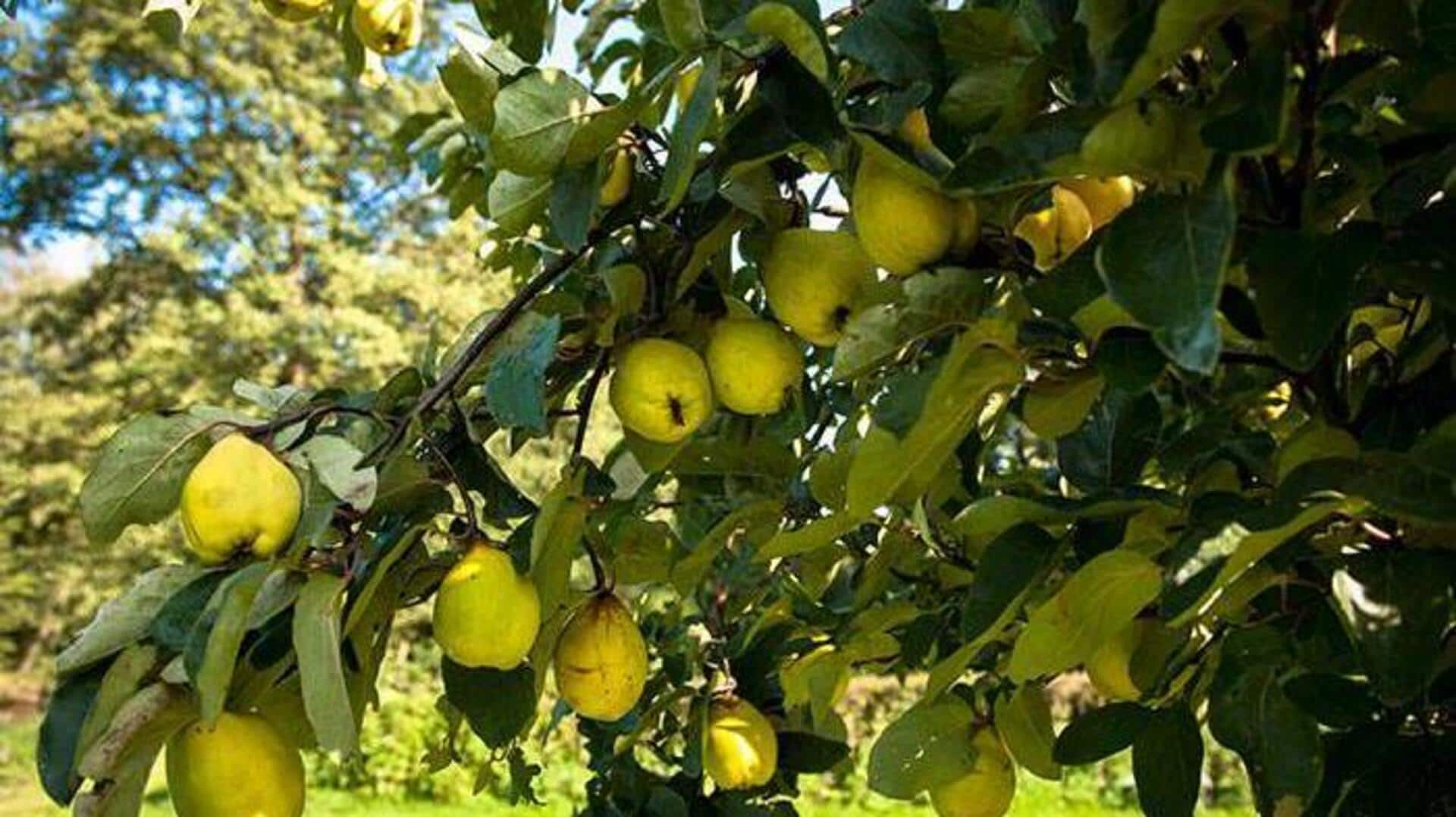
How to grow quince trees at home
What's the story
If you are interested in growing your own fruit, you can try growing quince trees at home. These trees are hardy and can flourish in a variety of climates, making them a great option for home gardeners. Given the right care, quince trees will bear delicious fruit that you could cook with or preserve. Here are some practical insights on growing quince trees in your garden.
Site selection
Choosing the right location
Selecting the right spot is essential for the successful growth of quince trees. They need full sun exposure to grow healthy fruit, so pick a spot that receives at least six hours of sunlight every day. Ensure that the soil is well-drained, as waterlogged conditions can damage the tree's roots. If your soil is heavy clay, amend it with organic matter to improve drainage and fertility.
Planting tips
Planting techniques
When planting quince trees, dig a hole twice as wide and just as deep as the root ball. Position the tree so that its graft union is above ground level to avoid rot. Backfill with soil and water thoroughly to eliminate air pockets around the roots. Mulching around the base helps retain moisture and suppress weeds but keep mulch away from direct contact with the trunk.
Care Essentials
Watering and fertilization needs
Quince trees require regular watering for their first few years until they develop a sturdy root system. Water deeply once a week during dry periods, but avoid overwatering as it may result in root rot. Fertilize once a year in early spring with a balanced fertilizer like a 10-10-10 NPK ratio to encourage healthy growth and fruiting.
Maintenance routine
Pruning practices
Pruning is important for shaping, promoting airflow, and removing dead/diseased wood from quince trees. Do so during late winter when dormant by cutting back any crossing branches or suckers growing from below the graft union point on the trunk. This promotes better structure development over time while minimizing disease risk due to overcrowded foliage areas within the canopy space itself.